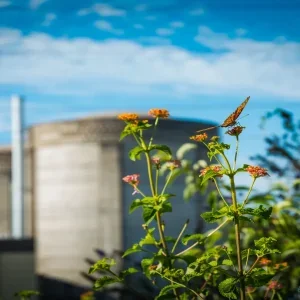
Ivanhoe Mines and Gécamines have agreed to create a new joint venture (JV) aimed at bringing back the Kipushi zinc mine in the Democratic Republic of the Congo (DRC) into commercial production.
The underground mine had been on care and maintenance since 1993 owing to a mix of economic and political factors.
It will be now redeveloped at an estimated pre-production capital cost of $382m. The redevelopment will involve construction for two years and will use the significant existing surface and underground infrastructure.
As per a new feasibility study, the mine life of Kipushi will be 14 years.
The initial mining at the Kipushi project will be focused on the Big Zinc zone. The project calls for the development of an 800 kilo tonnes per annum (ktpa) underground mine and concentrator.
According to Ivanhoe Mines, the Kipushi project will be the highest-grade major zinc mine in the world. The mine will have an average grade of 36.4% zinc during the first five years of production.
The new agreement outlines the commercial terms that will be the basis of the new JV agreement to set up a framework for the operation of the Kipushi zinc mine, said Ivanhoe Mines. The company said that the JV is subject to the signing of definitive documentation.
Ivanhoe Mines executive co-chair Robert Friedland said: “The new agreement now allows us to responsibly, efficiently and expeditiously develop Kipushi into an ultra-high-grade zinc producer, with outstanding potential to find more zinc, copper, germanium and silver resources – paving the way to fulfilling its promise of significant, long-lasting, economic and social benefits for the Congolese people.”
The Kipushi copper-zinc-germanium-silver mine is located nearly 30km southwest of Lubumbashi and less than 1km from the Zambian border.
For a period of 69 years from 1924 and 1993, the Kipushi mine yielded a total of 6.6 million tonnes of zinc and four million tonnes of copper from 60 million tonnes of ore grading 11% zinc and nearly 7% copper. Besides, the mine produced 278 tonnes of germanium and 12,673 tonnes of lead between the years 1956 and 1978.
In 2011, Ivanhoe Mines acquired a 68% stake in the Kipushi zinc mine. The remaining stake of 32% is owned by Gécamines, which is a state-owned mining company in DRC.
Following its drilling campaigns, Ivanhoe Mines has upgraded and expanded the Kipushi mine’s zinc-rich measured and indicated mineral resources to an estimated 11.78 million tonnes grading 35.34% zinc, 0.8% copper, 23 grams/tonne (g/t) silver and 64g/t germanium.
Gécamines CEO Bester-Hilaire Ntambwe Ngoy Kabongo said: “We are confident in Ivanhoe Mines’ technical and financial capabilities to operate the Big Zinc and trust that we can jointly develop the project in a sustainable, responsible and value adding manner for its stakeholders, such as neighbouring communities.
“Gécamines sees in it the opportunity for an improved exploitation of the Big Zinc, the development of an integrated economic fabric and the imbedding of skills in the Haut-Katanga province.”
In May 2021, Ivanhoe Mines had commenced production of copper concentrate from the Kamoa-Kakula mine in the DRC.






